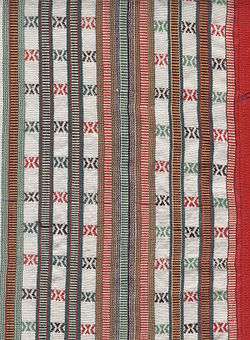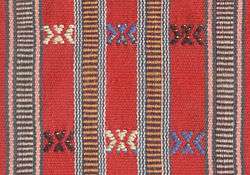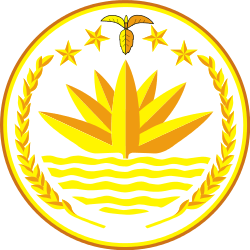Tripuri people
 Tipra children in traditional attire grouping up for song presentation | |
| Regions with significant populations | |
|---|---|
|
1.5 million | |
| Religion | |
| Hinduism, Christianity, Animism |
The Tripuri (also Tipra or Tipperah) people are the original inhabitants of the Twipra Kingdom in North-East India and Bangladesh. The Tripuri people through the Manikya dynasty ruled the Kingdom of Tripura for more than 2000 years until the kingdom joined the Indian Union in 1949.
History

Tripuris entered their present country through its north-eastern corner, settled there and gradually expanded their settlement and suzerainty over the whole of Tripura. They were able to expand their influence as far south as Chittagong, as far west as Comilla and Noakhali (known during the British period as 'plains Tipperah') and as far north as Sylhet (all in present Bangladesh). The ruling dynasty passed through several periods of history and ruled Tripura for several centuries till 18th century, after which it became a colony of Britain. On 14 October 1949, Tripura was merged into the newly independent India.
Language
The Tripuri people mainly speak dialects of Kokborok, the language which comprises the standard dialects of Debbarma, Tripura, Murasing, Jamatia, Noatia, Reang(Bru), Koloi, Uchui, and Rupini spoken around Agartala, and is the second official language of Tripura. There are estimated to be more than one million speakers of the dialects of Tripuri in Tripura, and additional speakers in Mizoram and Assam in India, and in Nepal, as well as Sylhet and the Chittagong Hill Tracts in Bangladesh.
Religion
According to the 2001 census, a majority of Tripuri people are Hindus.[1]
Society

The indigenous Tripuri people comprises hill communities viz., Tipra, Reang, Jamatia, Kaipeng, Noatia, Koloi, Halam, etc. who migrated to this land in successive waves. They grew in isolation and were sometimes subjugated by one another. Each community had its own elementary social and administrative organisation starting from the village level and up to the chieftainship of the whole tribe.
These indigenous communities enjoy their traditional freedom based on the concept of self-determination. The relation between the king and the subject communities was as Maharaja (king) of Tripura-Missip or liaison officer Roy or headman of the community – Sardar of chief of the village – the individual. Earlier, only the Debbarma or Tipra ethnic group was included in the Tripuri Kshatriya group. Later, the Raja included other groups like Reang, Jamatia and Noatia as well, in an attempt to foster a sense of kinship among the people under his reign.[2]
The Tripuri people have a rich historical, social and cultural heritage which is totally distinct from that of the mainland Indians. Their distinctive culture – as reflected in their dance, music, festivals, management of community affairs, dress and food habits – has a strong base. Kokborok, the lingua franca of the 12 largest linguistic groups of the indigenous Tripuris and other dialects spoken in Tripura are of the Tibeto-Burman group and distinct from those spoken in India. There is no influence from those spoken by other peoples in the north-eastern region. The music composer father-son duo of S.D. Burma and R.D. Burma belong to the Tripura royal family.
The main indigenous Tripuri communities are:
Daily living
The Tripuris live on the slopes of hills in a group of five to fifty families. Their houses in these areas are built of bamboo or ua as it is called in Kokborok and raised five to six feet height to save themselves from the dangers of the wild animals. Nowadays a considerable section of this community are living in the plains and erecting houses like the plains people, adopting their methods of cultivation, and following them in other aspects of life, such as dress, manners, and cosmetics. Tripuri women wear a scarp, called rignai, which reaches down just below the knee. They weave in their loin-loom a small piece of cloth, which they call risa, and they use this small piece of cloth as their breast garment.
Tripuri games and sports
Like many parts of the world the Tripuri has traditional sports. It is common in almost all the clans of Tripuri. They are called thwngmung in Tripuri. Nowadays these traditional sports are being abandoned gradually, as Tripuris are attracted to modern games and sports. But some of the sports still played and preferred in rural Tripura.
See also
References
- ↑ http://censusindia.gov.in/Tables_Published/SCST/dh_st_tripura.pdf
- ↑ Asian Studies, Volume 4 by Netaji Institute for Asian Studies, p.4
